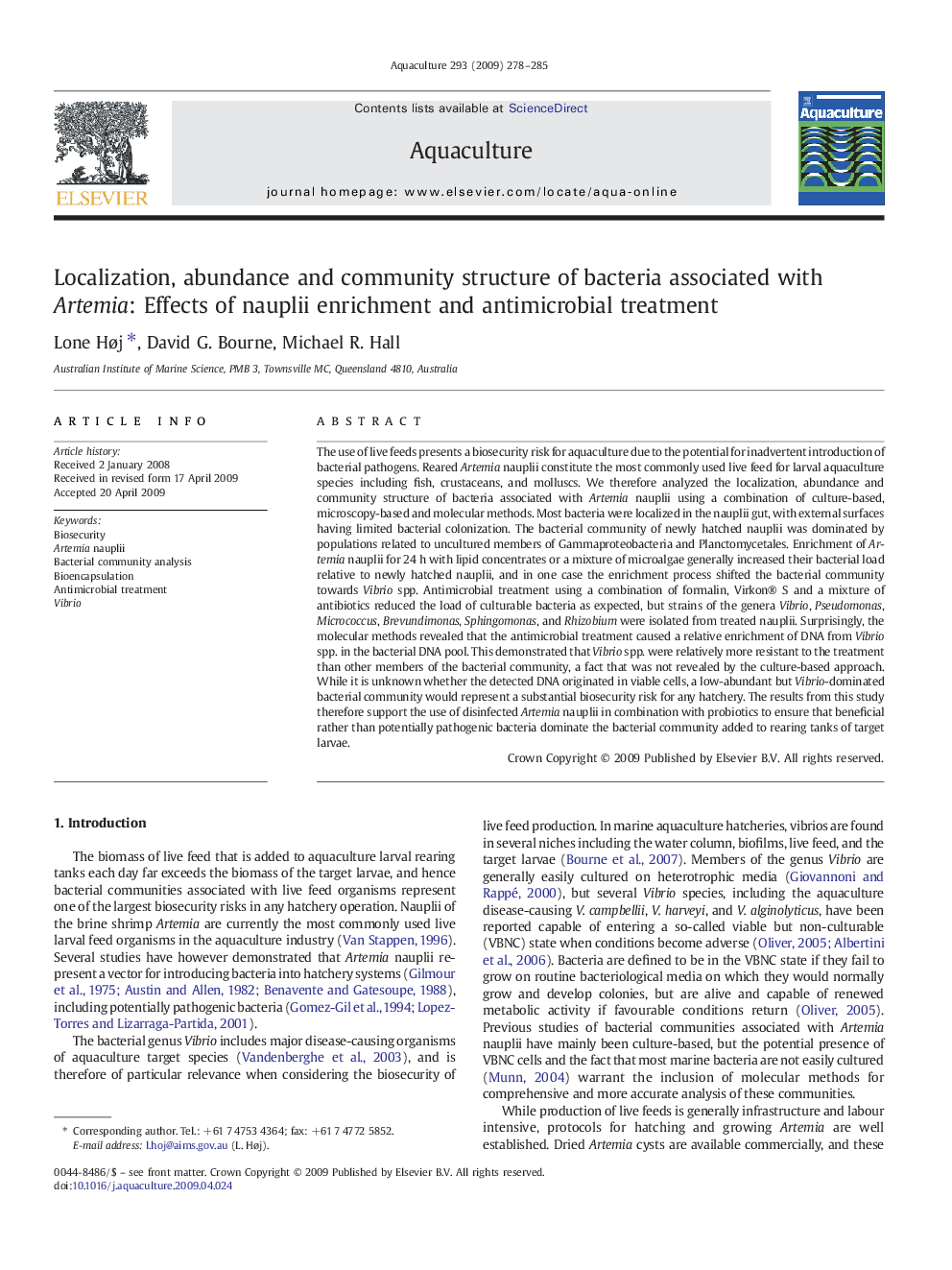| کد مقاله | کد نشریه | سال انتشار | مقاله انگلیسی | نسخه تمام متن |
|---|---|---|---|---|
| 2424064 | 1552940 | 2009 | 8 صفحه PDF | دانلود رایگان |

The use of live feeds presents a biosecurity risk for aquaculture due to the potential for inadvertent introduction of bacterial pathogens. Reared Artemia nauplii constitute the most commonly used live feed for larval aquaculture species including fish, crustaceans, and molluscs. We therefore analyzed the localization, abundance and community structure of bacteria associated with Artemia nauplii using a combination of culture-based, microscopy-based and molecular methods. Most bacteria were localized in the nauplii gut, with external surfaces having limited bacterial colonization. The bacterial community of newly hatched nauplii was dominated by populations related to uncultured members of Gammaproteobacteria and Planctomycetales. Enrichment of Artemia nauplii for 24 h with lipid concentrates or a mixture of microalgae generally increased their bacterial load relative to newly hatched nauplii, and in one case the enrichment process shifted the bacterial community towards Vibrio spp. Antimicrobial treatment using a combination of formalin, Virkon® S and a mixture of antibiotics reduced the load of culturable bacteria as expected, but strains of the genera Vibrio, Pseudomonas, Micrococcus, Brevundimonas, Sphingomonas, and Rhizobium were isolated from treated nauplii. Surprisingly, the molecular methods revealed that the antimicrobial treatment caused a relative enrichment of DNA from Vibrio spp. in the bacterial DNA pool. This demonstrated that Vibrio spp. were relatively more resistant to the treatment than other members of the bacterial community, a fact that was not revealed by the culture-based approach. While it is unknown whether the detected DNA originated in viable cells, a low-abundant but Vibrio-dominated bacterial community would represent a substantial biosecurity risk for any hatchery. The results from this study therefore support the use of disinfected Artemia nauplii in combination with probiotics to ensure that beneficial rather than potentially pathogenic bacteria dominate the bacterial community added to rearing tanks of target larvae.
Journal: Aquaculture - Volume 293, Issues 3–4, 16 August 2009, Pages 278–285